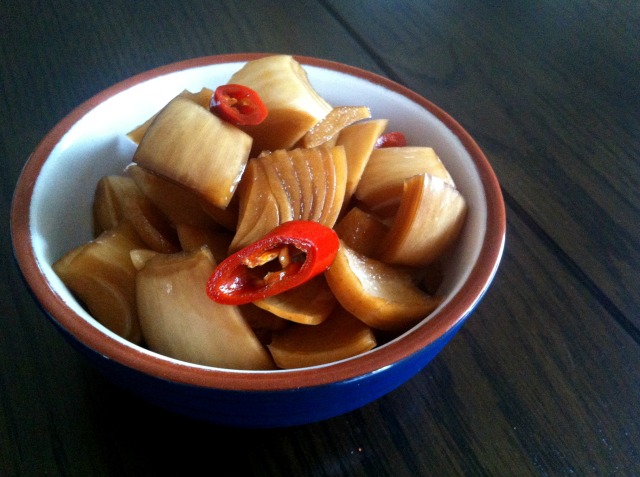Moving on from sharehousing to living just with The Boyfriend has been so much nicer than I anticipated. I knew that I would enjoy it but I didn’t know that I would enjoy it this much. When we first moved in I would just walk from room to room to remind myself that, yes, you really do have all of this space! Our furniture has trickled in gradually and using our new dining table for the first time, after 5 years of eating in front of the TV, felt pretty spectacular.
These pickled onions are an attempt the replicate my favourite side dish at my favourite Korean restaurant, Madtongsan 2. Their pickled onions blow my mind and I was determined that they would be mine. Another reason to love pickles (like I need one?) is how long they will hang out in your fridge for, just getting better with age. You can also use the pickling liquid as a spicy dipping sauce for Korean pancakes or any other dippable savouries in your life.
Yangpa Jangajji (Korean Pickled Onions)
Adapted from Korean Pickled Onion: Yangpa Jangajji Recipe over at Asian at Home.
1 3/4 cup water
1 cup soy sauce
1 cup sugar
1 cup white vinegar
1 lemon
2 1/2 white onions
1 large red chilli
In a medium saucepan over high heat combine the water, soy sauce, sugar and white vinegar.
Stir to dissolve the sugar and bring the mixture to a boil, reduce the heat to medium and simmer for 5 minutes.
Remove from the heat and squeeze in all the juice from the lemon, set aside.
Peel and cut the onions into bite sized pieces and slice the chillies.
In a large airtight jar (mine is about 1L) alternate layers of onion with the pieces of chilli until used up.
Pour the warm pickling liquid into the jar with the onions until they are covered (if you have left over pickling liquid you can use it as a dipping sauce for Korean pancakes).
Cover tightly with the lid and allow to cool completely on your kitchen counter.
When it’s cool, place in the fridge for 1-2 days before eating (you can eat it straight away but I like them really pickled before I go to town on them).



